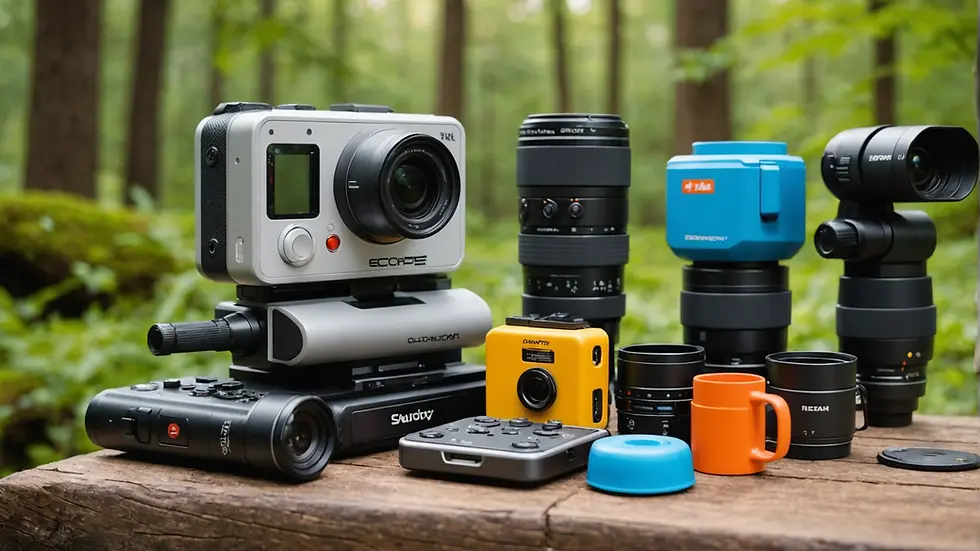Building Inclusive Outdoor Classrooms: A Guide for Teachers
- salih çatal
- Nov 2, 2024
- 4 min read
Creating inclusive outdoor learning environments is key to fostering equitable education. Every student deserves the chance to thrive, no matter their learning styles or physical abilities. This guide offers teachers practical strategies to accommodate diverse educational needs, ensuring that all students can engage meaningfully in outdoor education settings.
Understanding Inclusive Outdoor Learning
Inclusive outdoor learning environments focus on the needs of every student. They acknowledge that learners have different educational needs, from variations in learning styles to different physical abilities and ways of engaging with the world. By adapting these environments, teachers can create rich experiences that encourage participation and support learning for all students.
Outdoor classrooms offer excellent opportunities for various activities, including science experiments, art projects, and nature studies. To harness their full potential, teachers must recognize and address the spectrum of needs among their students.
Strategies for Diverse Learning Styles
Each student learns in unique ways. Some flourish with hands-on experiences, while others learn better through visuals or listening. Here are some strategies to embrace these different learning preferences in outdoor settings:
1. Incorporate Multiple Teaching Approaches
Using varied teaching methods is essential. For example, when exploring a local ecosystem, you could weave storytelling about local wildlife into your lesson. Supplement this with visual aids, like charts of local species, and tactile experiences, such as touching different types of leaves or rocks. Studies show that using multimodal teaching can increase student engagement by up to 60%, making lessons more dynamic and effective.
2. Provide Choices for Activities
Giving students choices in their activities can significantly boost their engagement. During a lesson on ecosystems, for example, students might pick from options like sketching flowers, observing insects, or gathering different types of leaves. This sense of autonomy allows students to connect with the material in ways that resonate with their interests and strengths. Displaying an options board with available activities can help students visualize their choices and pick what they feel most comfortable with.
3. Utilize Peer Support
Collaboration can foster inclusiveness and deepen understanding. By assigning roles within group activities, students can showcase different strengths. For instance, one student may excel at observation, while another shines at interpreting findings. Evidence indicates that peer learning can increase student confidence and performance, paving the way for a more supportive classroom culture.
Accommodating Physical Abilities
Creating an inclusive outdoor classroom also means accommodating students with varying physical abilities. Consider these recommendations:
1. Assess Accessibility
Before you plan outdoor activities, assess the space for accessibility. Ensure pathways are easy to navigate for students with mobility challenges. If the terrain is rocky or uneven, think about designating paved paths or sections with smooth ground cover. Making students aware of the layout will help them navigate the area confidently.
2. Use Adaptive Equipment
Incorporating adaptive tools can enhance participation in outdoor learning. For example, using magnifying glasses or adaptive gardening tools can help students engage actively in outdoor activities. Research shows that when students use tools suited to their abilities, their engagement in activities increases by over 40%.
Fostering Emotional and Social Inclusivity
Creating an inclusive environment involves more than just physical adjustments; it also requires emotional and social considerations. Here are strategies to promote emotional safety:
1. Build Community
Developing a strong sense of community makes students feel valued. Consider implementing team-building activities or collaborative projects that break down barriers among students. Recognizing each student's contributions can further solidify their sense of belonging.
2. Encourage Reflection
Reflection is vital for enhancing learning outcomes. After an outdoor lesson, prompt students to share their thoughts on the experience. Questions like "What did you enjoy?" or "What challenges did you face?" can foster discussion and help students learn from each other. This promotes not only communication skills but also personal growth.
Creating an Inviting Physical Environment
The physical setup of your outdoor classroom can significantly impact inclusivity. Here’s how to design a supportive space:
1. Diverse Learning Zones
Create various learning zones within your outdoor classroom, tailored for different activities. For example, establish a reading corner with soft seating, a science inquiry space for hands-on experiments, and a creative area for art projects. These diverse spaces provide students with options that align with their learning preferences, significantly enhancing engagement.
2. Sensory Experiences
Outdoor environments offer unique opportunities to engage the senses. Incorporating sensory elements, such as a small water feature, different plant textures, or fragrant herbs, can enrich the learning experience. Engaging multiple senses can bolster retention of materials by up to 50%, promoting deeper understanding of key concepts.
Embracing the Journey of Inclusion
Building inclusive outdoor classrooms is a rewarding journey that can enhancement learning for every student. By employing diverse teaching strategies, accommodating physical needs, fostering emotional safety, and creating an inviting space, educators can ensure every student benefits from outdoor education.
As you embark on this journey, keep in mind that every student is unique. Fostering inclusivity is an ongoing process, and it's essential to embrace creativity and adaptability in your teaching methods. Encourage students to engage fully with the outdoor classroom experience. Together, it's possible to create enriching outdoor learning environments where every student feels valued and empowered to learn.











Comments